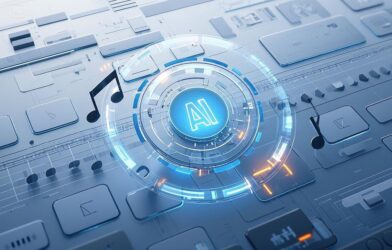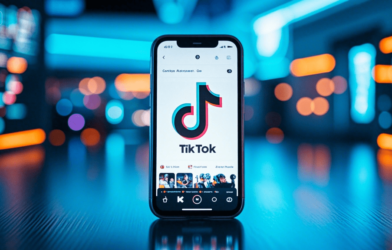Natural Language Processing (NLP) has become one of the most impactful subfields of Artificial Intelligence (AI). It plays a crucial role in transforming human-computer interactions, helping machines to understand, interpret, and respond to human language in ways that were once thought impossible. With the growth of digital technology and the vast expansion of data, NLP has emerged as an integral component of tools like chatbots, voice assistants, sentiment analysis, and machine translation systems.
Today, NLP is revolutionizing industries such as healthcare, finance, customer service, and many more. From its humble beginnings in rule-based systems to its current applications powered by deep learning, the journey of NLP has been nothing short of remarkable. In this article, we will delve deeper into the history and evolution of NLP, the techniques that enable modern NLP systems, and some of the most important real-world applications shaping the industries of today and tomorrow.
The Evolution of Natural Language Processing
1. Rule-Based Systems (1950s-1980s)
The concept of NLP traces its roots back to the 1950s when researchers first began investigating how computers could process human language. In this early phase, NLP systems were primarily rule-based, relying on a large set of manually crafted rules to parse and interpret text. One of the earliest and most famous examples of a rule-based NLP system is ELIZA, created by Joseph Weizenbaum in the 1960s. ELIZA simulated a conversation by using predefined patterns and responding based on input text (Weizenbaum, 1966).
These rule-based systems were constrained by the complexity of human language, which includes idiomatic expressions, ambiguity, and contextual meanings. The systems lacked the ability to generalize across different contexts or handle the vast range of linguistic phenomena in natural language. Furthermore, writing rules for every possible language structure made these systems difficult to scale.
2. Statistical Models (1990s-2010s)
The 1990s marked a significant shift in NLP with the introduction of statistical models. Rather than relying on hand-written rules, these models began to use statistical techniques to learn patterns from large datasets. By examining the frequency and co-occurrence of words in corpora, these models could predict linguistic relationships more effectively. During this period, methods like Hidden Markov Models (HMMs) and n-grams became widely used for tasks such as speech recognition and machine translation (Manning & Schütze, 1999).
The advantage of statistical models was that they could scale more effectively than rule-based systems. They could be trained on vast amounts of data and make probabilistic predictions based on observed patterns. However, these models still struggled with understanding the deeper semantics of language, as they relied primarily on surface-level features such as word frequency and word order. The lack of contextual understanding limited the accuracy and flexibility of these models in more complex applications.
3. Machine Learning and Deep Learning Models (2010s-Present)
The most profound advancements in NLP came with the rise of machine learning and, more significantly, deep learning in the 2010s. Machine learning algorithms, especially those based on neural networks, allowed NLP systems to automatically learn language patterns from vast amounts of data without needing explicit programming of rules.
Deep learning models, particularly Recurrent Neural Networks (RNNs) and Transformers (such as BERT and GPT), have revolutionized NLP by enabling machines to learn not just syntactic relationships but also semantic and contextual meanings from the data. Transformers, for instance, introduced the ability to process language in parallel rather than sequentially, making training on large datasets much faster and more efficient (Vaswani et al., 2017).
These advancements have allowed NLP systems to perform a wide range of tasks with remarkable accuracy, including language translation, text summarization, sentiment analysis, and text generation. One of the most notable breakthroughs in recent years has been the development of large-scale language models, such as OpenAI’s GPT series, which are capable of generating coherent and contextually aware text, simulating human-like conversations.
Key Techniques and Methods in NLP
Modern NLP systems are powered by a variety of advanced techniques that enable machines to process, analyze, and understand human language. Here are some of the most crucial techniques used today:
1. Tokenization
Tokenization is the process of splitting text into smaller, more manageable pieces, such as words or phrases, called tokens. Tokenization is one of the first steps in many NLP tasks because it allows the system to break down a sentence or document into smaller components for further analysis. Tokenization is especially important in languages with complex syntax and morphology, where words can change form depending on their context.
2. Part-of-Speech Tagging
Part-of-Speech (POS) tagging refers to the task of labeling each word in a sentence with its grammatical category (e.g., noun, verb, adjective). This technique helps the system understand the syntactic structure of the sentence, enabling it to identify the relationships between different words. POS tagging is essential for tasks like information extraction and machine translation, where understanding the role of each word in a sentence is crucial.
3. Named Entity Recognition (NER)
Named Entity Recognition is a technique used to identify and classify specific entities in text, such as names of people, organizations, locations, dates, and other real-world objects. NER helps extract meaningful information from unstructured data, enabling systems to structure it for further analysis. For instance, in the sentence “Apple is releasing the new iPhone in California,” an NER model would identify “Apple” as an organization and “California” as a location.
4. Sentiment Analysis
Sentiment analysis refers to the task of determining the emotional tone or sentiment expressed in a piece of text. This technique is widely used in customer feedback analysis, social media monitoring, and product reviews. By classifying text as positive, negative, or neutral, sentiment analysis enables businesses to measure public opinion and make data-driven decisions.
5. Text Classification
Text classification involves categorizing text into predefined labels or categories. For example, a news article could be classified into categories like sports, politics, or entertainment. Text classification is commonly used for tasks like spam detection, content filtering, and categorizing large volumes of documents based on their subject matter.
6. Machine Translation
Machine translation is the automated process of translating text from one language to another. Modern machine translation systems rely heavily on deep learning models, such as the Transformer architecture, to improve translation accuracy and fluency. For example, Google’s Neural Machine Translation (GNMT) system uses a deep learning model that has significantly improved the quality of automatic translations (Wu et al., 2016).
7. Word Embeddings
Word embeddings are a method of representing words in a continuous vector space, where similar words are placed closer together. Popular word embedding models like Word2Vec and GloVe have made it possible for NLP systems to understand the semantic relationships between words. For example, words like “king” and “queen” would be placed closer together in the vector space due to their semantic similarity (Mikolov et al., 2013).
Applications of NLP to Real-Life Problems
NLP is already having a profound impact on various industries, transforming how businesses operate and how we interact with technology. Here are some notable real-world applications:
1. Healthcare
The healthcare industry generates vast amounts of unstructured data, including patient records, clinical notes, and medical literature. NLP is used to extract valuable information from this data to assist in diagnosis, treatment planning, and research. For instance, NLP algorithms can analyze clinical notes to identify symptoms, suggest possible diagnoses, and recommend personalized treatment plans.
Moreover, NLP-based virtual assistants are increasingly being used to support healthcare professionals by transcribing interviews, summarizing patient history, and offering real-time decision support. This significantly reduces the administrative burden on doctors and allows them to focus on patient care.
2. Customer Service
NLP is widely used in customer service to enhance the efficiency and effectiveness of support systems. Chatbots and virtual assistants, powered by NLP, can handle customer inquiries in real-time, providing instant responses to frequently asked questions and assisting with routine tasks like order processing and issue resolution. These systems help improve customer satisfaction while reducing the need for human intervention, cutting down operational costs.
3. Sentiment Analysis and Market Research
NLP plays a crucial role in sentiment analysis, helping companies understand public sentiment toward their products, services, or brand. By analyzing social media posts, online reviews, and customer feedback, businesses can gauge consumer sentiment, identify emerging trends, and make informed decisions. This application is also valuable for market research, enabling companies to adjust marketing strategies based on real-time consumer insights.
4. Financial Services
The finance sector is leveraging NLP for a variety of applications, including fraud detection, risk management, and market sentiment analysis. NLP systems can analyze large volumes of financial data—such as earnings reports, news articles, and social media—to identify patterns and detect anomalies that might indicate fraudulent activities. Additionally, sentiment analysis tools help investors gauge market sentiment and make more informed trading decisions.
5. Legal and Compliance
NLP is used in the legal industry to automate the analysis of legal documents, contracts, and case law. By extracting key information such as clauses, deadlines, and parties involved, NLP systems significantly reduce the time and effort required to review documents. This automation not only improves efficiency but also reduces the likelihood of human error, making it easier for legal teams to ensure compliance with regulations.
6. Education
In education, NLP-based applications are being used to enhance the learning experience. Essay grading systems, powered by NLP, can automatically evaluate student-written essays, providing instant feedback on grammar, structure, and content. Additionally, language learning applications use NLP to help students improve their pronunciation and grammar by offering real-time corrections and suggestions.
The Future of NLP
As NLP continues to evolve, its capabilities will only expand, offering even more sophisticated and seamless interactions between humans and machines. The integration of NLP with other AI technologies like computer vision and robotics will open up new possibilities, such as voice-controlled AI in smart homes and autonomous vehicles. Furthermore, advancements in large language models (LLMs) like GPT-4 and beyond will push the boundaries of human-computer communication, making interactions more natural and intuitive.
Conclusion
The evolution of Natural Language Processing from simple rule-based systems to advanced deep learning models has revolutionized the way machines process and understand human language. NLP is transforming industries like healthcare, finance, customer service, and education, providing powerful tools for automating tasks, extracting insights, and enhancing decision-making processes. As the field continues to advance, we can expect even more innovative applications and profound changes to the way we interact with technology.
References
- Weizenbaum, J. (1966). ELIZA—A computer program for the study of natural language communication between man and machine. Communications of the ACM, 9(1), 36-45.
- Manning, C. D., & Schütze, H. (1999). Foundations of Statistical Natural Language Processing. MIT Press.
- Vaswani, A., Shazeer, N., Parmar, N., Uszkoreit, J., Jones, L., Gomez, A. N., Kaiser, Ł., & Polosukhin, I. (2017). Attention is all you need. arXiv preprint arXiv:1706.03762.
- Mikolov, T.,













